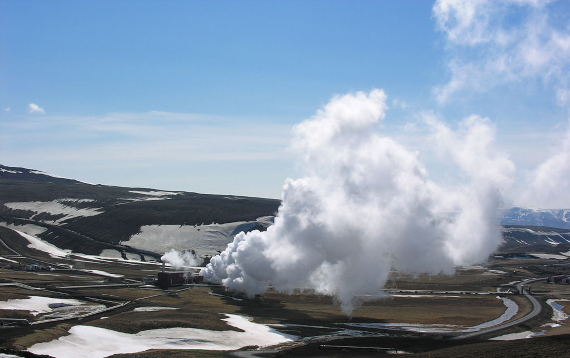Bitcoin, the first cryptocurrency, was created in 2009 to cut out the middle-man from the commerce of digital assets. Although bitcoin payments aren’t managed by a central bank, they are safe because each transaction is irreversibly registered in the blockchain, a sort of digital accounts book kept by thousands of users spread across the globe. These accountants compete against each other to record each new payment in the decentralised ledger and, in exchange, receive new bitcoins. The catch? This process, known as mining, has become so competitive that nowadays it can only be done with powerful computers whose energy consumption, as a whole, surpasses that of many countries.
Estimates vary, but the environmental impact is vast. Conservative calculations by Digiconomist suggest that the bitcoin network drains 51 billion kilowatts-hour every year. Under a more realistic reckoning, the popular cryptocurrency is likely to run on nearly 78 billion kilowatts-hour per year. This is on par with the electrical consumption of Chile, a country of 18 million inhabitants. On top of this, there are thousands of alternative cryptocurrencies, all created after 2009 following the bitcoin model — some are popular and some are insignificant, but their combined operational power has never been calculated.
This voracious appetite for electricity supports the foundations of blockchain technology. Before each bitcoin transaction may be registered in the ledger, the system requires a complex mathematical equation, called a hash function, to be solved. Bitcoin miners are in a constant race to solve each hash — only the first to do so will obtain the cryptocurrency reward. With each puzzle and its corresponding prize, the network prevents transactions from being registered more than once in the ledger, but the custodians are kept incentivized.
Polluting bitcoin farms
Solving hash calculations is an energy-intensive process which requires specialized computers. Often miners have dozens or thousands of machines working day and night in bitcoin farms to maximize their chances of registering each transaction and earning new coins. The correct solution to each equation is easily verified by any user of the network, but very difficult to generate — that’s why these computers need powerful processors.
Because the value of bitcoin is always on the rise, an arms race has developed: before, coins could be mined with personal computers, but now it’s only possible to do so with purpose-built machines called ASICs. These are priced in the range of thousands of dollars, and their electricity consumption rivals that of large home appliances. Every few years, ASICs become obsolete and must be replaced by newer models to stay in the race. Using many of these machines together also requires the installation of dedicated cooling systems or air conditioning.

One study, published in 2018 in the journal Nature Sustainability, found that mining bitcoins used more energy than mining gold, based on the extraction of each dollar equivalent. Blockchain expert Félix Brezo, from the European University of Madrid, points out that the environmental impact of this electrical consumption depends on the energy source: a cryptocurrency farm may be fueled by thermal energy from burning fossil fuels or by solar energy from photovoltaic panels.
Currently, carbon dioxide emissions from the bitcoin network could be around 36.95 megatons per year, which is comparable to the carbon footprint of New Zealand. However, the heterogeneity of the electrical grid makes it difficult to estimate blockchain’s real impact; for instance, mining in China generates four times more carbon dioxide per bitcoin than mining in Canada does.
Even within China, a country which generates half of the world’s cryptocurrency-derived emissions, there are notable differences. According to a study by Susanne Köhler and Massimo Pizzol, researchers at Aalborg University in Denmark, the Chinese region of Interior Mongolia accounts for just 12.3% of the country’s bitcoin mining, but a fourth of the greenhouse gas emissions associated with this activity, due to the regions’ reliance on coal. On the other hand, cryptocurrency mining is fueled by clean hydropower in the Chinese region of Sichuan.
Clean electricity for the blockchain
One possible solution to alleviate the environmental impact of blockchain technology is to promote the use of renewable energies. In fact, many miners have set up their bitcoin farms in Iceland, where the machines are fueled by geothermal energy and cooled by Arctic air. But entrepreneurs flock to these places under the promise of cheap — not necessarily green — electricity. They are also mindful of choosing locations with a reliable supply of energy, and renewables are less attractive than fossil fuels due to their frequent power fluctuations.

There are alternative cryptocurrencies which directly incentivize the use of clean electricity. Solarcoin, for instance, rewards users of photovoltaic energy. Another option is to nip the problem in the bud by altering the part of blockchain code which requires wasteful computation. This is easier said than done. Bitcoin is popular precisely because it enables accounting of international payments while dispensing with intermediaries and with the possibility of censorship or fraud.
In 2012, the creators of peercoin proposed a sustainable blockchain model which has now been adopted by other cryptocurrencies. Under this system, the opportunity to register each transaction is awarded to a user chosen randomly from a pool of them who are supposedly invested in the long-term success of the currency. New peercoins, therefore, aren’t minted for miners who carry out power-hungry computations — they are granted to users who have accumulated and held onto virtual wealth. However, it hasn’t quite taken off in the same way that bitcoin did. Critics argue that the system makes rich users richer, which jeopardizes the decentralized governance of the cryptocurrency. This is why there is still no clear-cut answer to the blockchain’s energy problem.
Comments on this publication